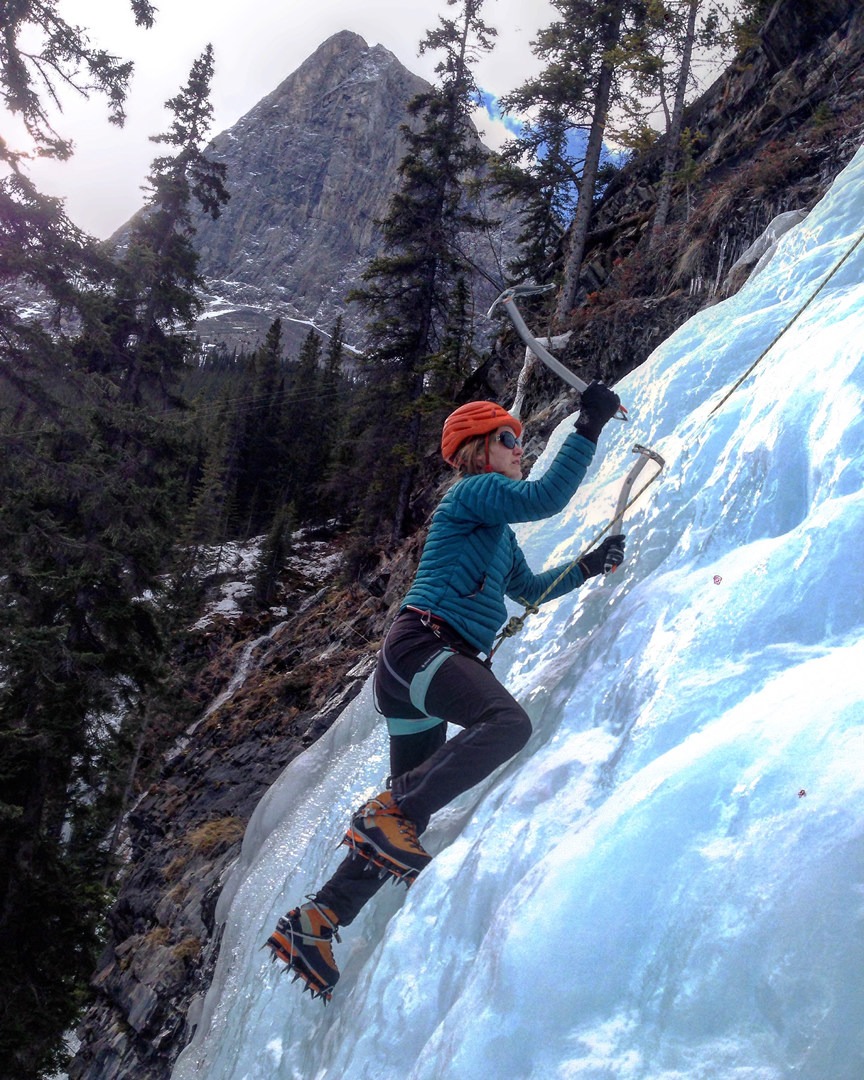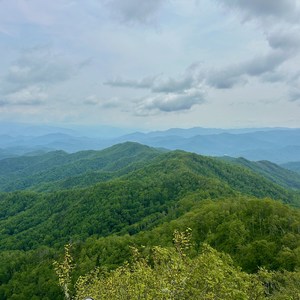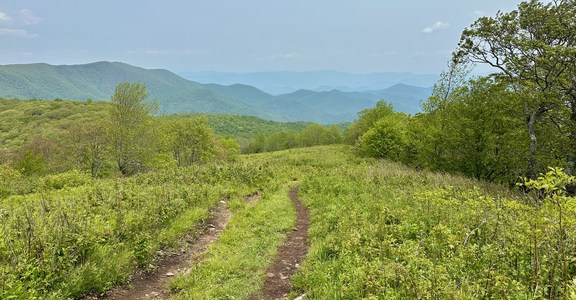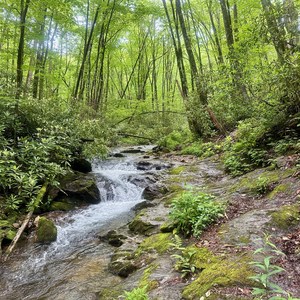You are here
For many climbers, Junkyards is their very first ice climb. Its close proximity to town and its easy routes make it a great spot to try out the sport. The relative ease of the climbing likely has to do with the popularity as well. Most of the routes are graded WI2 or WI3. The area does see a lot of traffic for this reason, and you are guaranteed to see guided parties here nearly every weekend of the season. The lower falls aren't top-rope friendly, but the upper section, which is also less popular, is generally fine.
Junkyards tends to form up okay in the November freeze that normally rolls into the valley mid-month. Due to its close proximity, it's very easy to check up on conditions. You can spot the ice forming from town at certain angles. The ice persists well into late March and often April depending on the season.
Nearly every weekend day in the winter will see a group from Yamnuska, the largest commercial guiding operation in the valley, if not others. Many other groups will also frequent this area. In general, they are friendly and often happy to let polite and demonstrably competent parties use their ropes. If everyone is polite, there is seldom ever any conflict or loss of routes. With that said, the upper section of Junkyards or Scottish Gully can be good options if you want to avoid the crowds.
Getting to the parking lot requires taking the road out of town toward the Nordic Centre. Follow the road south for the Smith Dorian. When you get to the road barrier bar, you should see Ken Richards Road.
Approach
Parking at the Grassi Lakes hiking lot beside the lake, you have two options to make an approach. The less hilly route follows beneath power lines and approaches the lower section of Junkyards. It proceeds down a steep hill to a road beside an active dam and power station. At the end of the road, there is a trail heading uphill along a creek. Follow this trail zig-zagging up. The ice normally builds up in the trees off to the side of the lower icefall. While sloped, this area is one of the main staging areas. From here, climbers walk to the flat section beneath the main flow. If you see a big Yamnuska van, probably a good call to take the second option.
The second option follows the Grassi Lakes hiking trail. This is a much prettier trail than the lower access. This trail is very packed out, and often requires microspikes or crampons. It tends to get icier towards the end, marked by a bench where you can put on your crampons. From here, the trail crosses directly over the top of the lower Junkyards. Keep following this up around a corner and a short flight of stairs. This gains a wide open area with more ice.
Climbing
The area can be divided into four sections.
The lower junkyards is wide open section of rolling hill. On the left the ice forms in an 8-meter, near-vertical section. This section is generally graded WI3. It is a little steep above this before dropping to about 40 to 45 degrees, steadily tapering for a total length of 60 meters from the base. The right side is less steep and more rolling. Most parties elect to climb the steeper ice. When done climbing, most will use v-threads to lower. Some groups use the longer length to practice multi-pitch climbing.
To the left of the main area is a sloped, more consistently steep WI3 route called the Scottish Gully. It starts a little higher and runs about 25 meters. It starts a bit higher than the junkyards area.
Above Junkyards is a second, less wide face that is more consistent, but it lacks the short section of near vertical. Some consider this better climbing as the consistency means less time spent on awkward calf-burning 35- to 45-degree ice. This section is graded WI2 with some more challenging WI2+ to WI3. There are tree anchors that one can set top ropes on above.
The fourth section is seldom used. There are several bolts for under-developed mixed routes on which there is little information in any local guidebooks of forums.
Gear
- Helmet, harness, and belay device
- Ice tools and crampons
- Rope, ice screws (small sizes in early season), slings, and screwgates for anchors
- Slings (240 cm) are good for trees
- Abalakov and cord—most climbers v-thread off the lower section
Logistics + Planning
Current Weather: Powered by Dark Sky






























Comments
Sign In and share them.